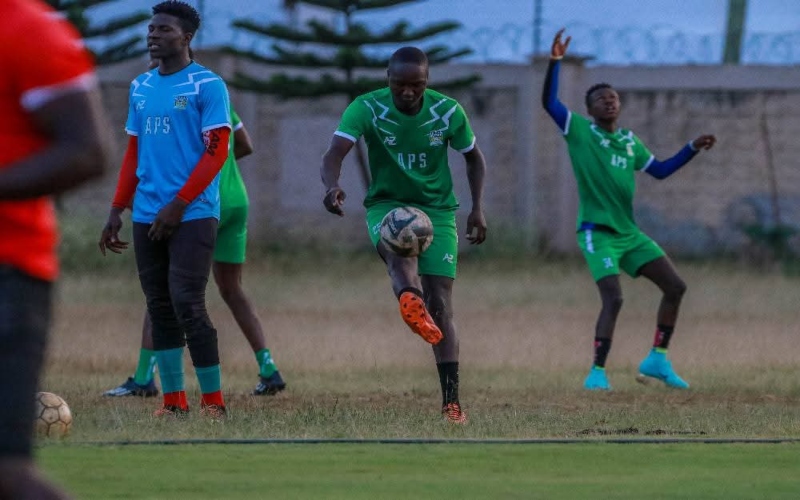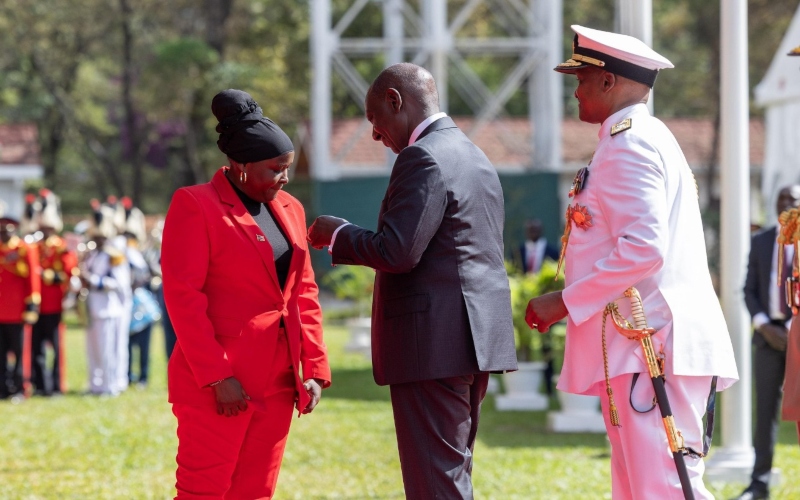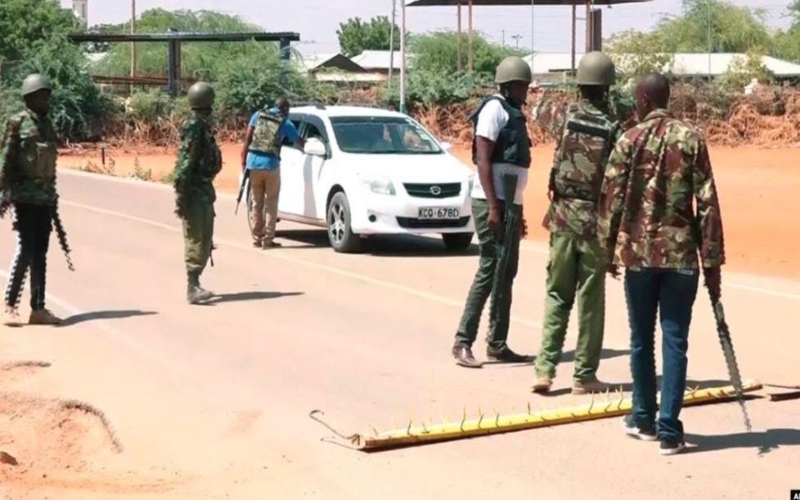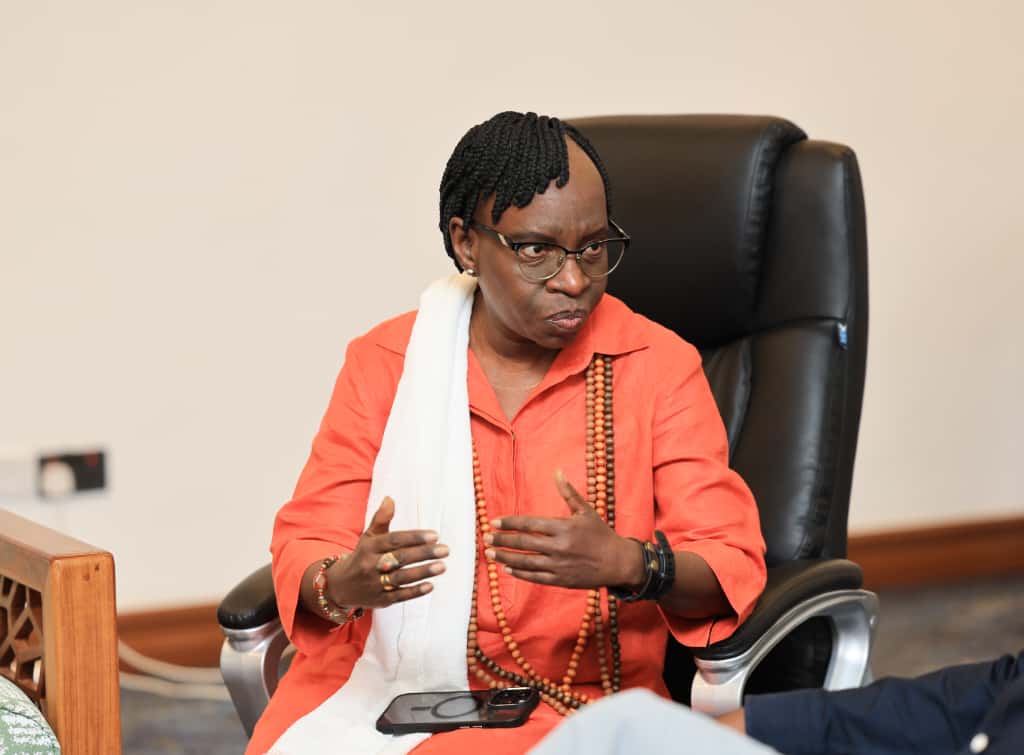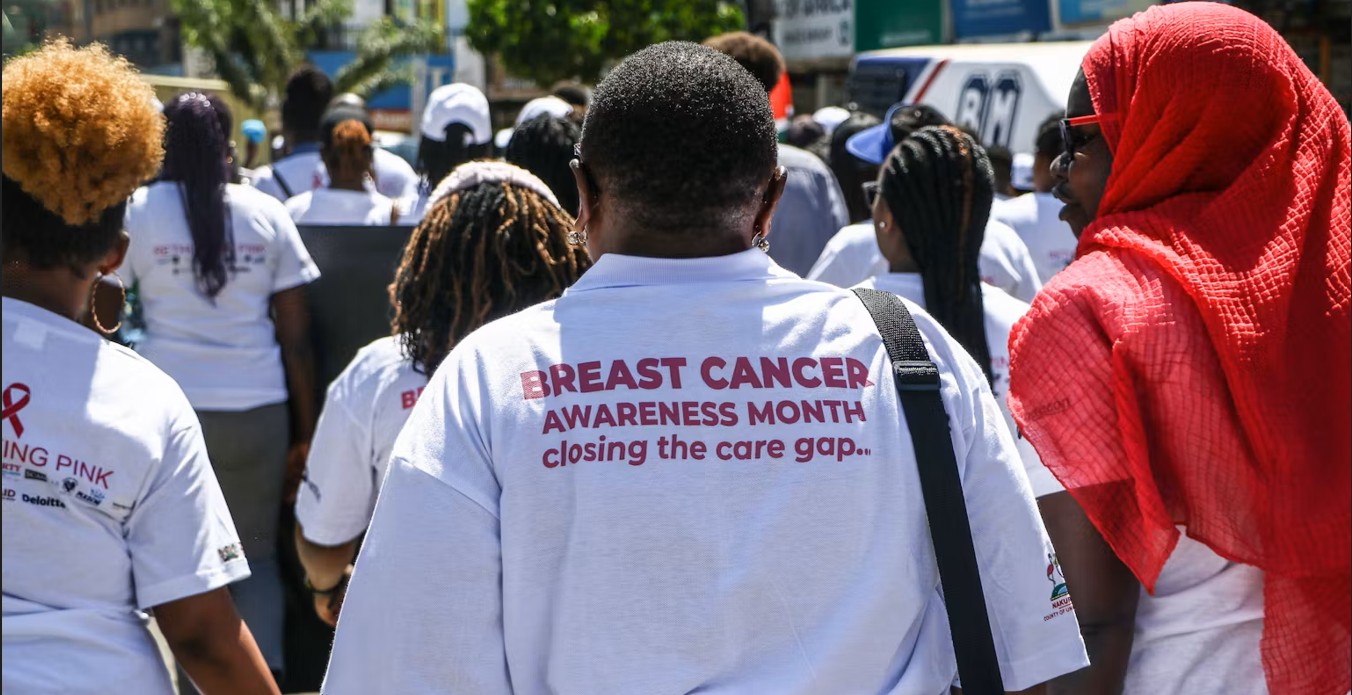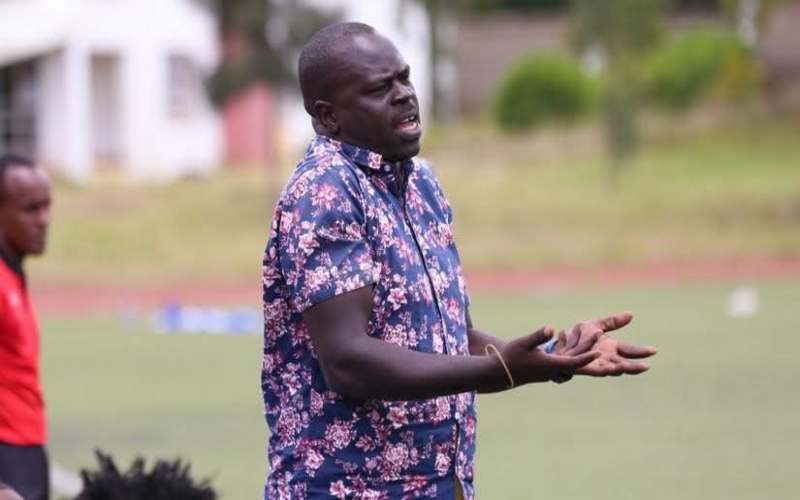How homeless Ethiopian refugee rose to become successful hotelier in Eastleigh
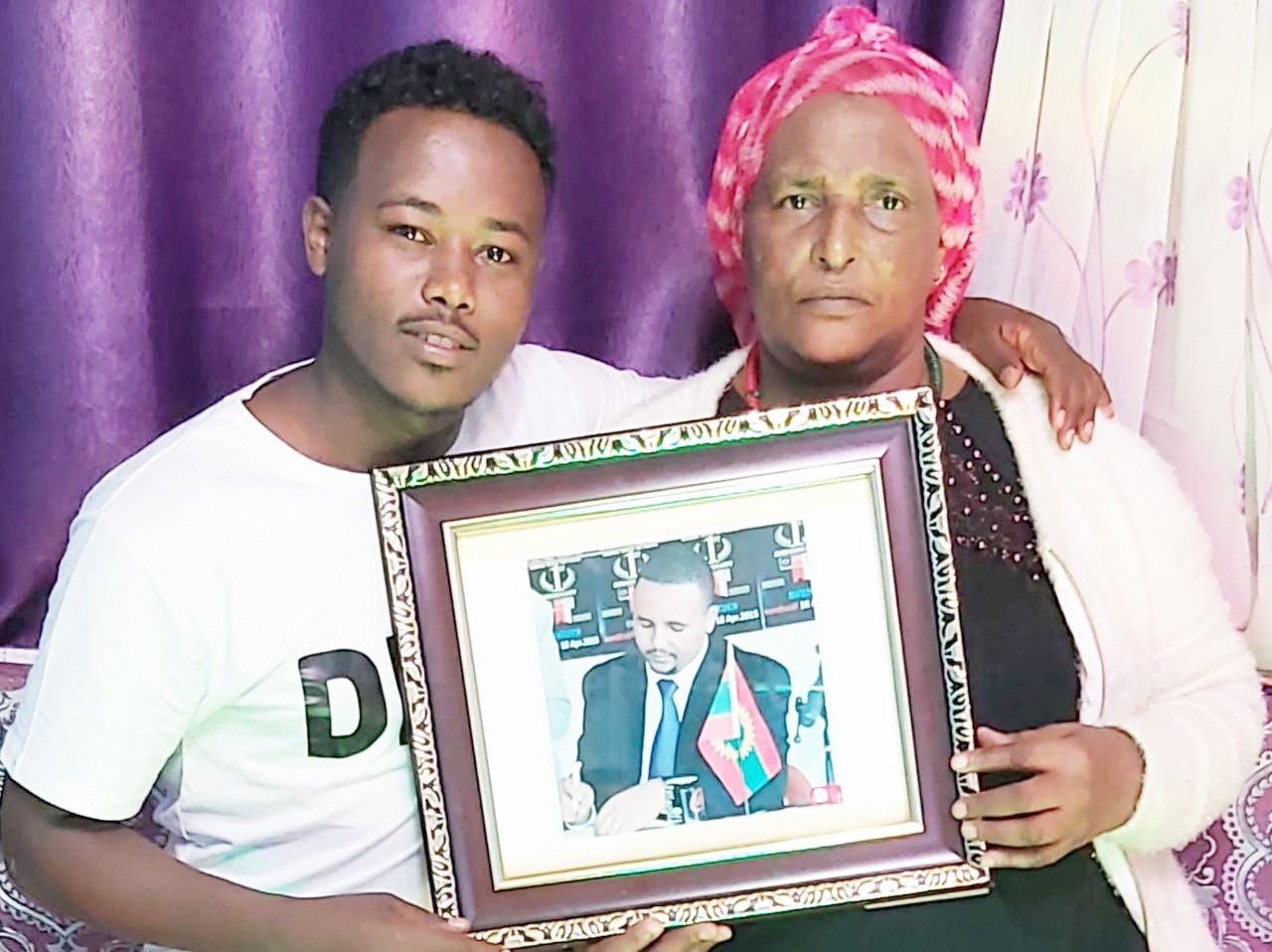
The restaurateur fled his country at the age of 15 after he became wanted for participating in the Oromo youth protests in 2016.
In a busy Ethiopian restaurant in Nairobi’s Eastleigh business centre, Habtamu, the manager, calls out orders via a walkie-talkie in a mixture of English and Afaan Oromo language.
“Injera Kitfo for two to the family room, one injera tibs main room and special injera and Bunna with Ambo water to the VIP room,” he says.
More To Read
- Vibrant atmosphere as Eastleigh comes alive as Ramadan draws to a close
- Explainer: Why are Ethiopia and Eritrea on the brink of a possible war?
- Ethiopia’s coffee export revenue hits $988 million, surpassing targets
- Lasting peace in Ethiopia? More needs to be done to stop Tigray conflict from flaring up again
- Exploring new horizons: What upcountry visitors say about shopping at Eastleigh
- Dreams deferred: The loan barrier for Eastleigh traders facing economic hurdles
Situated at the Ebenezer Sosos Plaza on 10th Street, Murtesa Restaurant is fully packed when I arrive at 1.45 pm and orders are coming in every minute. It is one of the most popular Ethiopian restaurants in Eastleigh.
“I know you will be asking why we are using walkie-talkies in a restaurant. It just gets crazy busy here and the walkie-talkies make the orders easier to deal with,” says 23-year-old Murtesa Fayiso as he ushers me to one corner of the restaurant
“I had to reserve this table for you. It’s always full here. What would you want to eat?” Murtesa asks amid noises of orders, as customers chat with Ethiopia music playing from speakers.
“Oh, I will go for Shekle Tibs. That’s my favourite Ethiopian dish. With Tef injera please, not the white rice injera,” I tell him, and he signals Woyessa, one of the 15 waiters, to take the order.
Murtesa has a humble look despite his success as a restauranteur, a well-known philanthropist and a role model for the youth in the Ethiopian community in Eastleigh.
Twenty years ago, on this same 10th Street, Murtesa was a homeless 15-year-old Ethiopian refugee, unsure of his future in this foreign country after fleeing a clampdown on dissenting voices at the height of the Oromo youth protests in 2016 that would later topple the Ethiopian People’s Revolutionary Democratic Front (EPRDF) regime led by former Prime Minister Haile Mariam Desalegn.
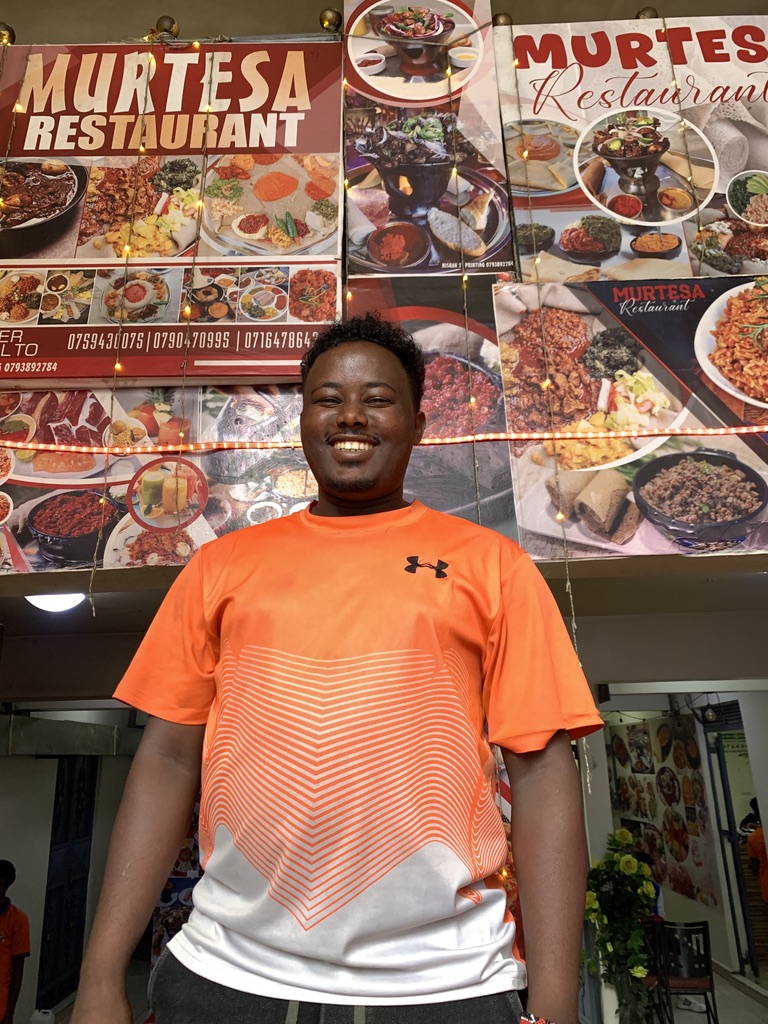 Murtesa Fasiyo at the popular Eastleigh's Murtesa Restaurant. (Photo: Yassin Juma EV)
Murtesa Fasiyo at the popular Eastleigh's Murtesa Restaurant. (Photo: Yassin Juma EV)
“I was one of the Qeerroo protest organisers in my home area of Nagele in Arsi Shashemene zone. It was a popular youth uprising similar to the one Kenya is experiencing now, only that our government was more brutal in its reaction. I was arrested several times,” says Murtesa.
Qeerroo movement
He had joined the Qeerroo movement as a Grade Nine student, inspired by Oromo leader Jawar Mohamed. His father died in the Oromo struggle after succumbing to injuries sustained in years of imprisonment and torture.
Qeerroo refers to a movement of young Oromo activists who led a mass strike in 2016, leading to the 2018 resignation of the prime minister. Oromo is the largest ethnic group in Ethiopia, with an estimated population of 65 million people.
“I was a marked man. My photos were all over on wanted list posters. My life was in danger. 208 of my Qerroo comrades were killed by the government security agents in a single day and I decided enough is enough; let me flee my country and seek asylum in Kenya or join the Oromo Liberation Forces fighters based near the Kenya border,” Murtesa says.
My order arrives at the table and Murtesa signals me to taste it as he eagerly awaits my reaction to his recommendation of the “Murtesa special VIP” meal that the restaurant is famed for. It is a mix of steamed kifto beef, fried kitfo, goma vegetables, and boiled eggs all laid on top of brown tef injera added to my request of the shekle tibs sliced beef pan-fried in butter, garlic and onion served in a clay dish. I had to admit it was indeed delicious.
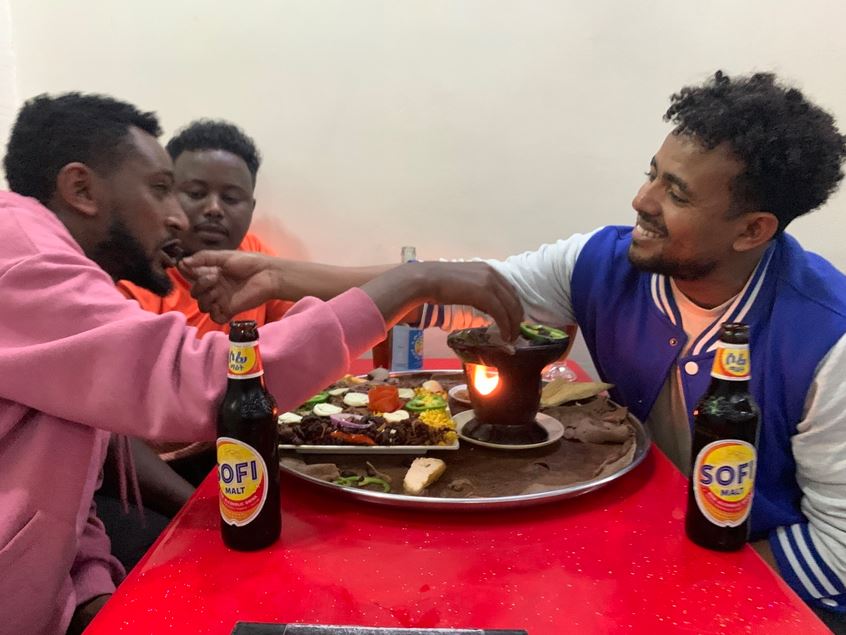 From left: Kadir, Murtesa and Obsa do the "gursha" Ethiopian tradition of feeding each other to express love and brotherhood at the popular Eastleigh's Murtesa Restaurant. (Photo: Yassin Juma)
From left: Kadir, Murtesa and Obsa do the "gursha" Ethiopian tradition of feeding each other to express love and brotherhood at the popular Eastleigh's Murtesa Restaurant. (Photo: Yassin Juma)
The serving is generous. We eat on a communal platter together with Murtesa and his friend Kedir. Murtesa then continues narrating his story.
When he arrived in Moyale, as fate would have it, he failed to get a reliable contact to connect him to the OLF fighters based in a rebel camp near Sololo.
“The contacts I got could not trust me and suspected I may be a government spy. I decided to drop my ambitions to join the armed struggle to fight for Oromo self-determination and instead decided to pay a Borana lorry driver I met in Moyale 20,000 Birr (about Sh44,000 today’s rate) to smuggle me to Nairobi where I could seek refugee status,” the young restauranteur says.
Murtesa says he was squeezed in between sacks of beans in the lorry for the entire 778km journey to avoid being arrested by Kenyan police at the numerous checkpoints from Moyale to Marsabit.
After a three-day rough journey from the Ethiopian border, he arrived at 10th Street, just meters away from where his restaurant now stands. He was in a strange land with no contact, no friend or relative in Nairobi. He was cashless and homeless.
“I didn’t know anyone here. All the money I had was spent to pay for my lorry ride to Nairobi. I decided to look for a mosque and beg for space to sleep on my first night in Nairobi. I ended up at the Maalim Ali Mosque in California,” Murtesa says.
At the mosque he overheard two Ethiopians planning to go to a place called Shauri Moyo where “many other Ethiopians would meet”. He had misunderstood their talk and thought they meant that most Ethiopians lived in Shauri Moyo. The two were refugees planning to go to the UNHCR offices in Shauri Moyo to be registered.
“I decided to follow them to discover this Shauri Moyo hoping to meet Oromo Ethiopians who could assist me as I was homeless and broke. I followed them secretly from California to Shauri Moyo. They entered a building where there was a line of people. As I was crossing the road to access the building, a boda boda knocked me down,” Murtesa says.
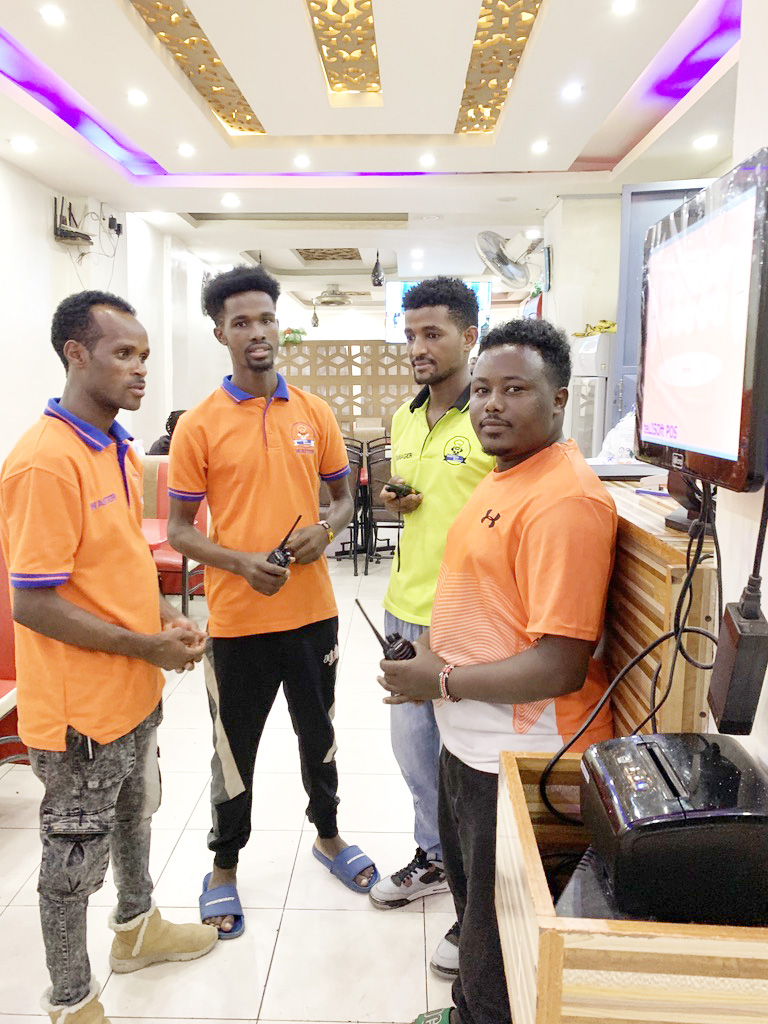 Murtesa Fasiyo (right) briefing waiters and the manager at the Murtesa Restaurant in Eastleigh. (Photo: Yassin Juma)
Murtesa Fasiyo (right) briefing waiters and the manager at the Murtesa Restaurant in Eastleigh. (Photo: Yassin Juma)
For 15 days Murtesa was hospitalised after suffering serious injuries from the boda boda accident. As fate would have it, it was UNHCR officials who called for an ambulance to take him to hospital.
Homeless
“After my discharge, I explained to the UNHCR officials that I was homeless and had nowhere to go. They linked me up with a Christian Ethiopian family who took me in. For several weeks, this family pestered me to convert to Christianity. Being a staunch Muslim, I declined. They chased me away to the streets. I was homeless again,” Murtesa says and poses to drink Sofi, a non-alcoholic Ethiopian malt drink.
Fate was again at play in Murtesa’s life. As he was walking on the streets as a homeless boy one day, he met Lancha Michu.
“I met her on a street in California. I stopped her and it turned out she was also an exiled Oromo. She empathised with me and invited me to her home and, since 2016 to date, Lancha’s home has been my home and her family my family. I had become their son,” says Murtesa.
Lancha had been involved in the Oromo struggle for many years and, together with her family, they fled to Kenya to seek asylum during the late Meles Zenawi rule.
After just seven days of staying with the Lancha family, Murtesa got his first job. He now had a home and a monthly salary.
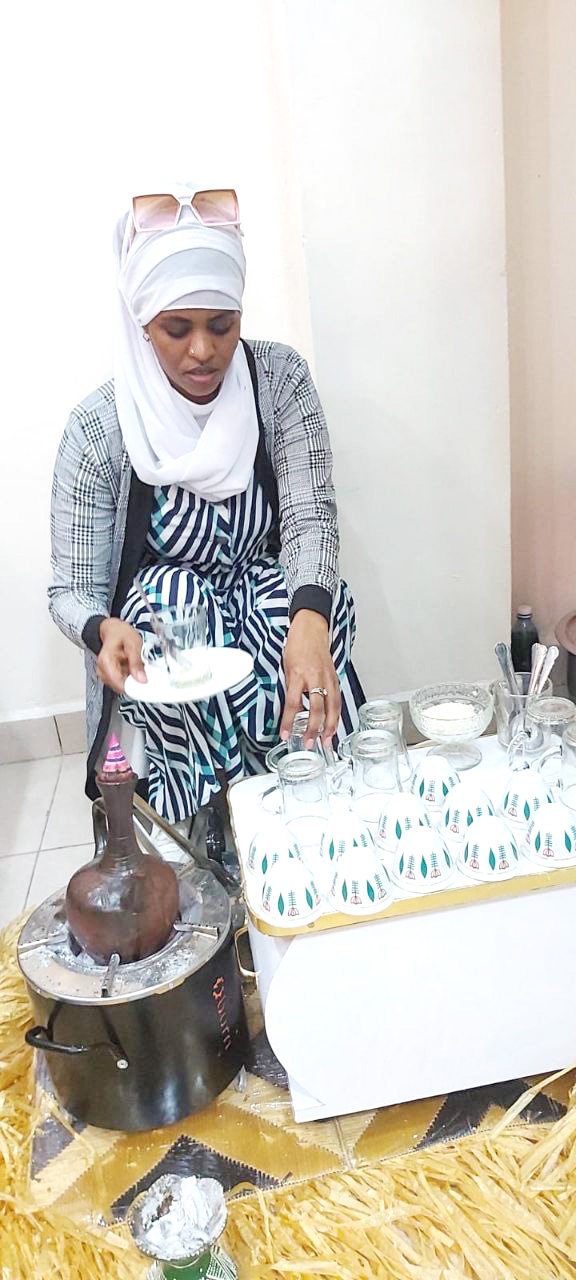 Lina Mohamed performing the traditional Bunna coffee ceremony at the Murtesa Restaurant in Eastleigh. (Photo: Yassin Juma)
Lina Mohamed performing the traditional Bunna coffee ceremony at the Murtesa Restaurant in Eastleigh. (Photo: Yassin Juma)
“I was a food delivery boy receiving Sh6,000 a month. My boss was an Ethiopian named Thadeus. His restaurant was also named Thadeus. It was just across the street opposite my restaurant,” he says as he points in the direction of Thadeus restaurant where he worked for six years delivering food to malls in Eastleigh.
“Murtesa was hardworking and had the gift to sweet-talk potential customers into buying from Thadeus restaurant. He convinced even Somali shopkeepers to try out Ethiopian food. With time he had become the favourite food delivery boy for the majority of Ethiopians working at different malls and shops in Eastleigh,” says Kedir Nagessa who was always served by Murtesa while he worked at Amal Mall.
Because of surpassing the sales targets set by his boss, Murtesa’s salary was raised to Sh8,000. He saved most of his earnings and by 2022, he had saved enough money to establish his own restaurant.
“It started as a simple small one-room restaurant that could handle utmost 10 people, with one waiter and a chef. Nothing fancy like what you see today. The food was good though and it attracted more customers. I continued with my food delivery to the shops and malls. I made a profit and expanded it to what you see now. The space can handle over 150 people at a time,” he says.
He later expanded the restaurant, changed the interior design, bought computers for accounting purposes, imported furniture, installed TV screens, expanded the kitchen and employed more workers.
“My story is one of hard work, resilience, perseverance and belief in myself and the will of God. I am proud that I arrived in Kenya with no cent to my name but today I have employed 23 people. I run a charity to give back to the community the same way Mama Lancha helped me in my time of need,” he says emotionally.
With 10th Street being busy even at night, Murtesa’s restaurant operates round the clock.
“We uniquely make our injera that’s why we remain the best Ethiopian restaurant in Eastleigh. We also specialise in other traditional foods like marqa or gomfo, chachabsa for breakfast besides Somali, Sudanese and Kenyan food,” he says.
Top Stories Today
